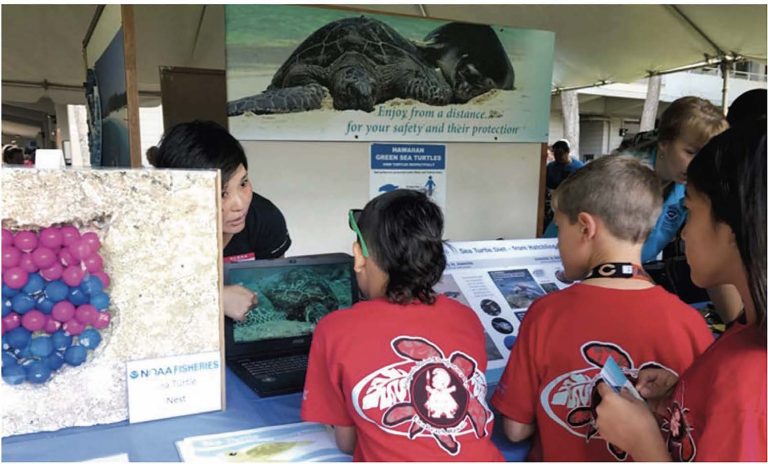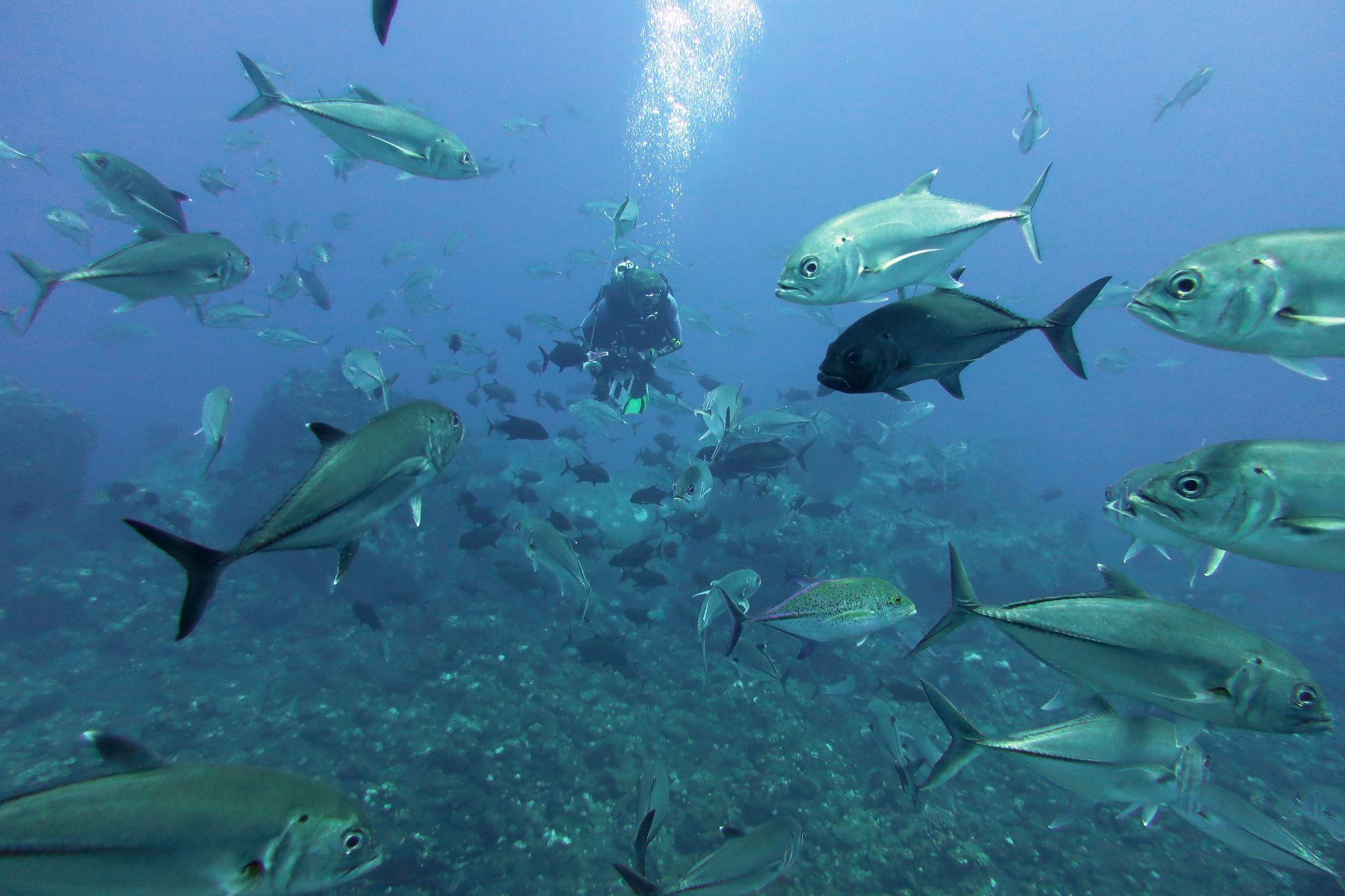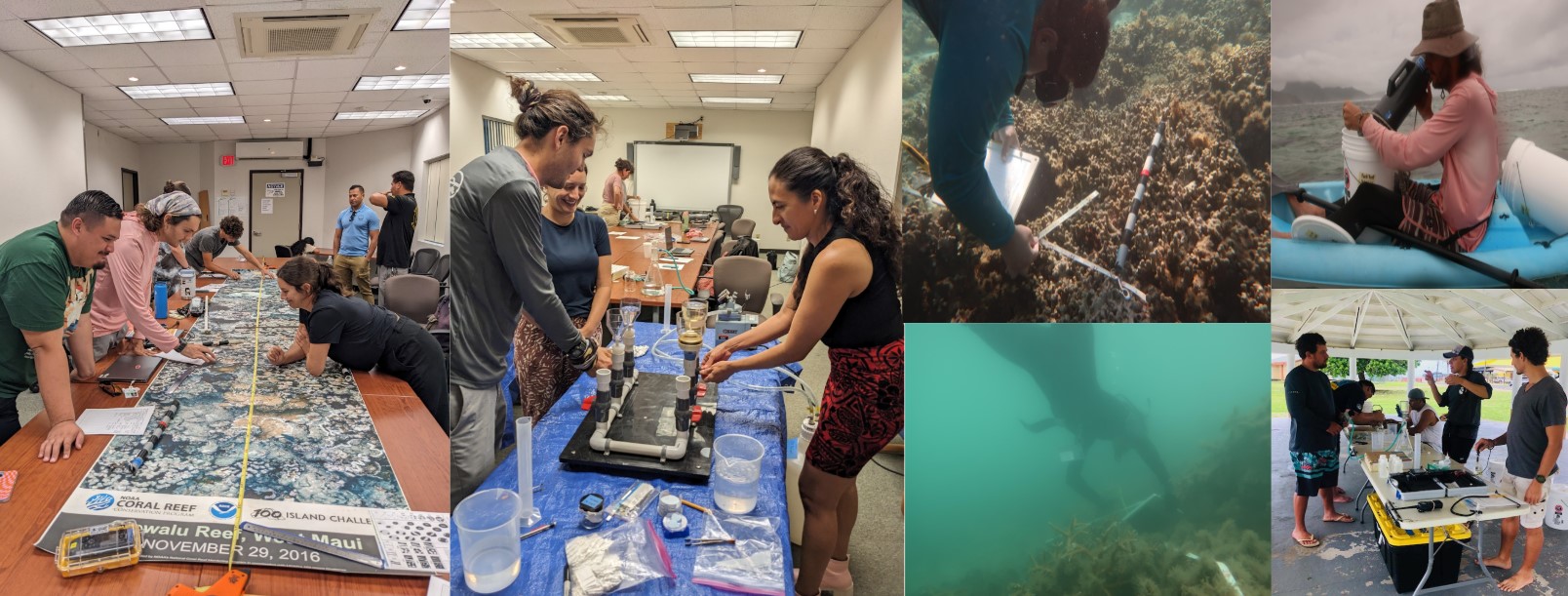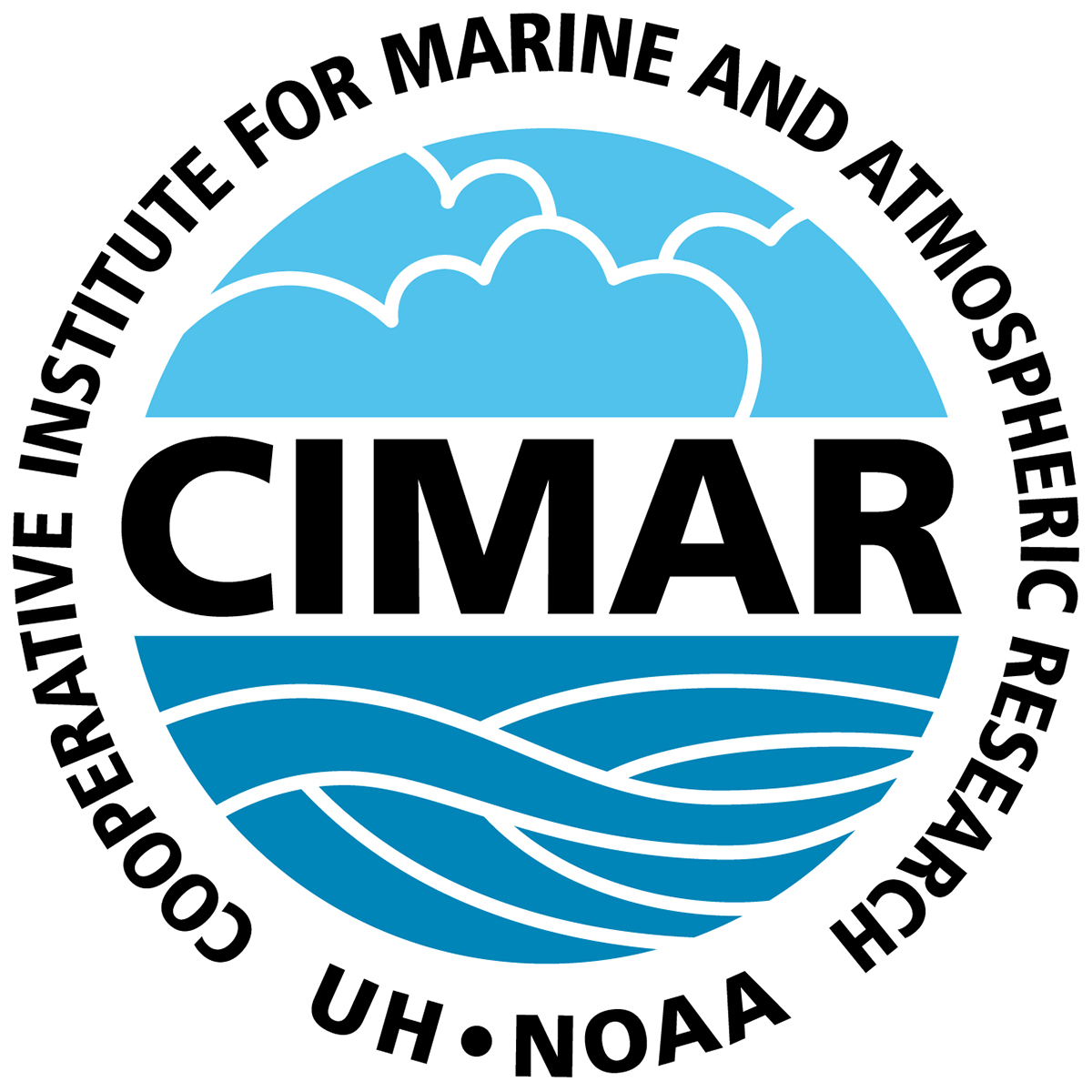Home > Education+Outreach > Outreach
CIMAR staff contribute to NOAA/NMFS/PIFSC blog postings and provide other web content including feature stories, podcasts, science blogs, story maps, photographs, and videos. They also coordinate and conduct ‘newsroom’ sessions each month in the PIFSC to harmonize science communications, education, and outreach messaging for scientists in PIFSC.
CIMAR staff participate in community and educational events to communicate information about CIMAR and NOAA missions, programs, and policies and encourage the public to learn about and support healthy ocean ecosystems and marine science research. These activities include: the Hawai‘i Seafood Month webinar; critter cam talks; University of Guam marine turtle presentation; United Nations World Oceans Day; Hanauma Bay Science and Sustainability event; Kupu teacher externship event; Pacific Islands Interactive webinars at Bishop Museum; monk seal webinar; Hawai‘i State Science Fair judging; Hawai‘i Conservation Conference; Daniel K. Inouye Regional Center Summer Intern Symposium; NOAA Discovery Day at Kapolei Library; Marine Educator’s Night; Career Fair at UH Mānoa; Hawai‘i Fish & Dive Expo; various high school career fairs; Earth Day events; Waikiki Aquarium events; and World Ocean Day.


CIMAR researchers regularly meet with fishermen and fisheries observers in the Pacific Islands Region to discuss and promote bycatch mitigation efforts for protected species. CIMAR staff also create and distribute a quarterly newsletter for the Hawai‘i Community Tagging Program. CIMAR staff working in the SocioEconomics project collaborate with federal staff to develop a short outreach video to summarize relevant fieldwork with local fishing communities and to demonstrate the multi-faceted value of fishing.
CIMAR staff meet with local and U.S. territorial government officials to communicate scientific endeavors within their jurisdictions. For example, tours can be conducted on NOAA ships while in port in American Samoa, Guam, or Saipan as part of reef monitoring activities, and CIMAR staff often escort local school children, government officials, and the general public to view the vessel and interact with the scientists.

CIMAR engages non-academic, jurisdictional partners by conducting targeted capacity-building initiatives that support NOAA PIFSC’s mission. For instance, in October–November 2024, three CIMAR scientists traveled to Nu’uuli, American Samoa, to work directly with local partners—the American Samoa Coral Reef Advisory Group and the Department of Marine and Wildlife Resources. Over three weeks, CIMAR staff led a comprehensive training program that combined virtual lectures, in-person classroom sessions, and hands-on fieldwork (snorkeling and kayaking). Participants were trained in water quality sampling and rapid ecological assessment techniques, enabling them to monitor coral health and evaluate the impacts of pollution on reef resilience. This effort not only built technical skills among local staff but also incorporated outreach to high school students, local families, and community leaders, thereby strengthening community-wide support for sustainable marine resource management.

